Posts About Wild Bee Survey
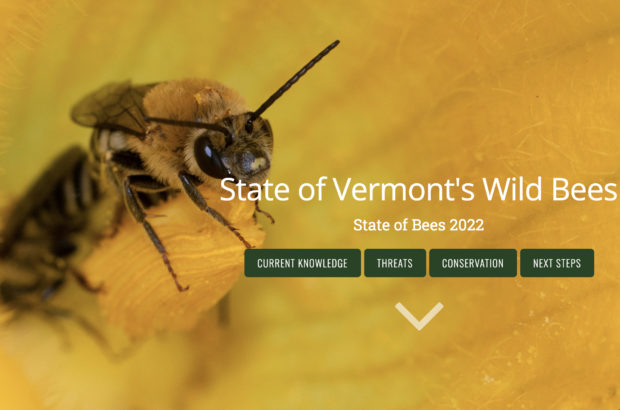
Conservation Coffee Hour: Interview with Spencer Hardy about Vermont’s Wild Bees
Join VCE Executive Director Susan Hindinger and VCE bee biologist Spencer Hardy for insights into Vermont’s bee diversity. Together, they will discuss key takeaways from the 2022 State of Vermont’s Wild Bees report and explore its conservation impacts in Vermont and beyond.
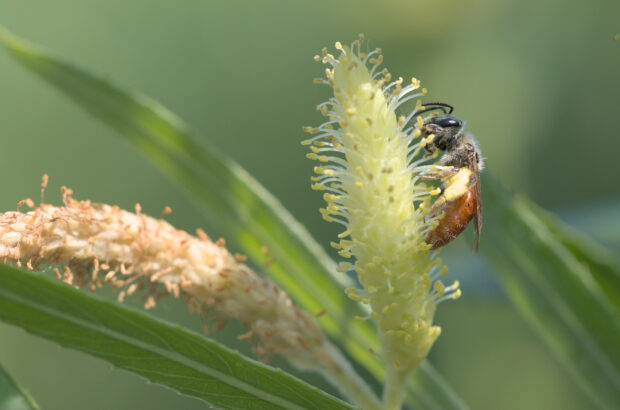
New Native Bee Species Discovered for Vermont
A mystery red bee visiting an uncommon willow tree in bloom becomes Vermont’s latest native bee species discovery by biologist Spencer Hardy.
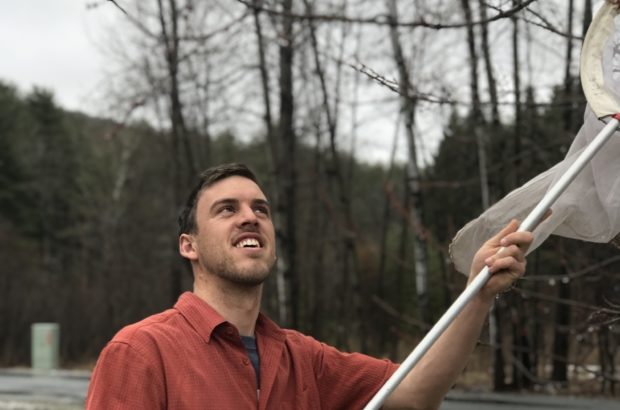
New Vermont ‘Bee Team’ to Tackle Pollinator Threats
A new Vermont Pollinator Working Group will protect bees and other pollinators by targeting harmful pesticide use, while helping Vermont farmers to get to know the pollinators buzzing around their crops.
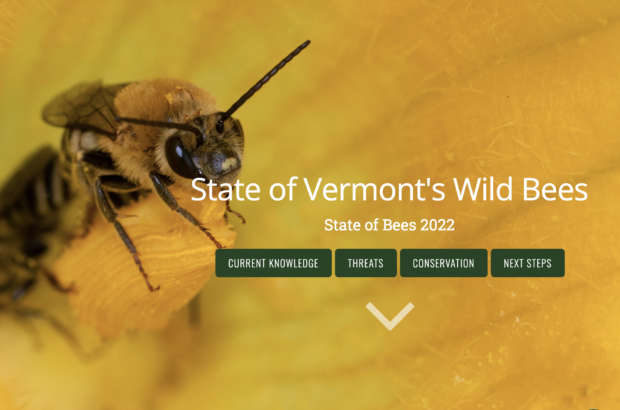
State of Vermont’s Wild Bees Report Assesses Conservation Status for First Time
Over 350 wild bee species call Vermont home, but 55 of those species urgently need conservation action. A new report from the Vermont Center for Ecostudies (VCE), in collaboration with the Vermont Fish & Wildlife Department (VFWD), provides the first comprehensive assessment of Vermont’s bees.
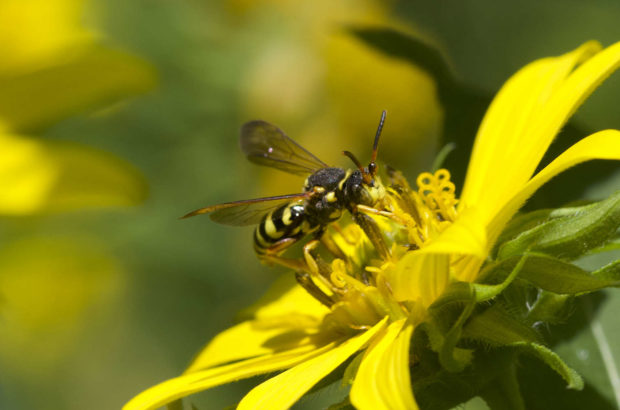
Summer Bee Update: Four Years in, the Flood of New Species is Becoming a Trickle
Year four of the Vermont Wild Bee Survey is winding down, but not before adding at least three new species to the state checklist. Additional species certainly await discovery, but the number of new ones found each is steadily declining, suggesting we’ve located the vast majority of the species present.
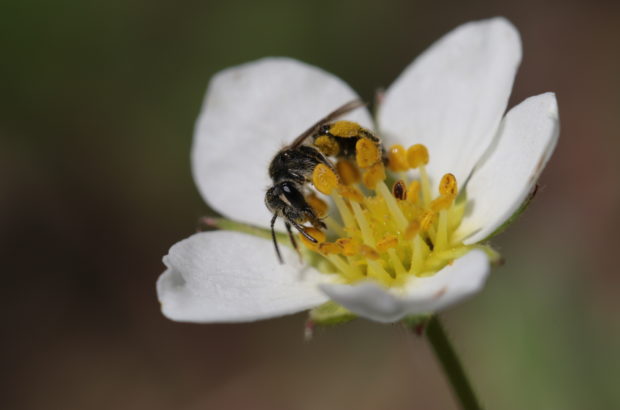
No Mow May
Are you dreading the lawn mowing that’s sure to follow the upcoming warm spell? Well leaving the lawnmower in storage is all the range right now! Call the “weeds” flowers, and embrace the insects and other wildlife that will show up to enjoy the buffet.
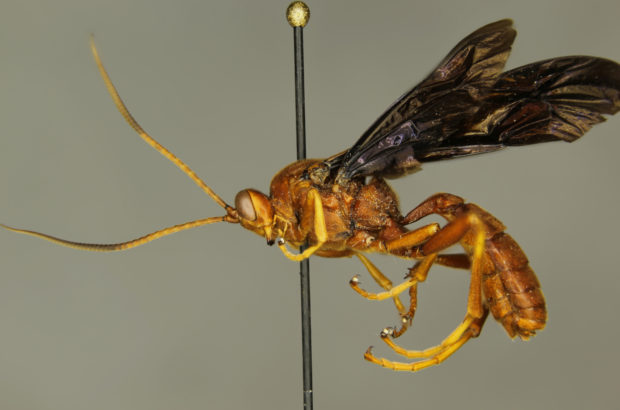
Long Distance Collaboration Documents An Overlooked, Hyper-Diverse Taxon
Two dedicated volunteers and a graduate student in Utah come together to document one of Vermont’s least studied and most diverse insect families!
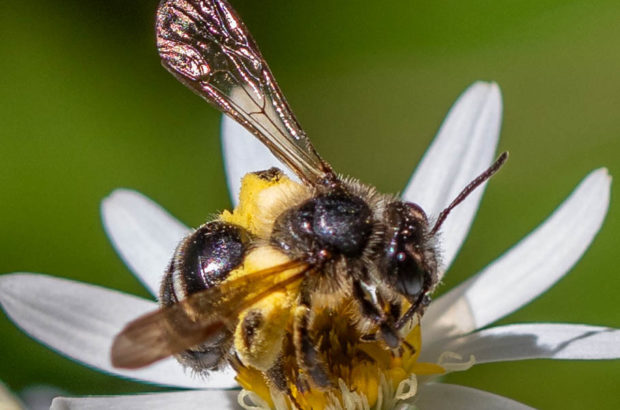
A Poorly Known Bee Hiding in Plain Sight
Through a combination of specimens and iNaturalist observations, the Vermont Wild Bee Survey is illuminating a rare bee, even if the exact identity isn’t yet known.
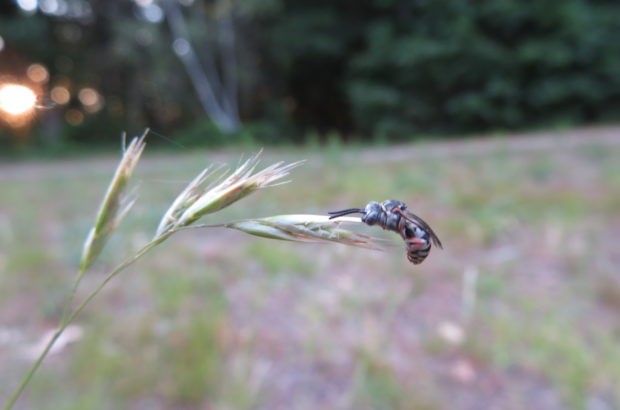
New Bees Discovered in Vermont with Worldwide Teamwork
The Vermont Wild Bee Survey has amassed over 50,000 bee records and discovered over 50 new bee species for the state in just two years. It takes an entire village to discover bees–volunteer naturalists, field biologists, and bee identification experts. Three new bee discoveries in June highlights the teamwork.
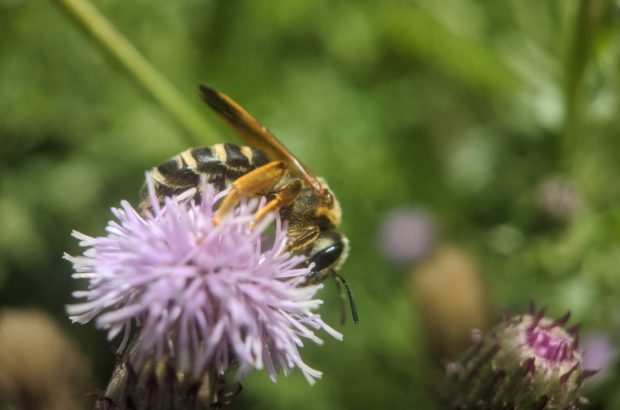
Vermont Wild Bee Survey Discovers New Pollinators for the State
The survey has added about 50 new bee species to the state checklist over the last two years and will likely add many more as field surveys continue and historic collections are closely examined. You can help too! Join our survey. It’s as easy as snapping a photo with your smartphone.






